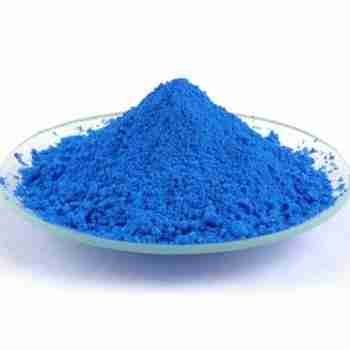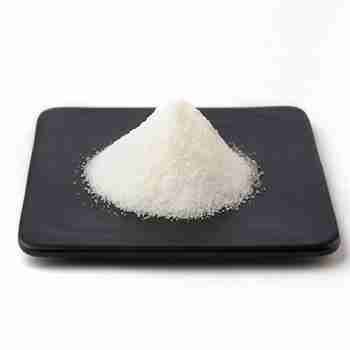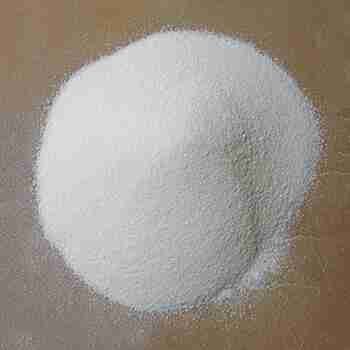C-Phycocyanin Cas 11016-15-2
Chemical Name: C-Phycocyanin
CAS No.: 11016-15-2
Molecular weight:?426.67
Appearance: BLUE POWDER
Assay??80%
发送询盘
Description
C-PHYCOCYANIN Quick Details
Chemical Name: C-Phycocyanin
CAS No.: 11016-15-2
Molecular Fomula:/
Chemical Structure:/
Molecular weight:?426.67
Appearance: BLUE POWDER
Assay??80%
PHYCOCYANINTypical Properties
Appearance
Blue?powder
Odor/Taste
Characteristic
Solubility
Water soluble
Impurity
None visible?impurity
Color value
??250unit
Loss?on?drying
??7.0%
Protein?(g/100g)
15-70%
Phycocyanin?(g/100g)
10-60%
Lead?(Pb)
??0.9?(mg/kg)
Arsenic?(As)
??0.5?(mg/kg)
Mercury?(Hg)
??0.05?(mg/kg)
Total?plate count
??1000?(CFU/g)
Mold*
??300?(CFU/g)
Coliforms
??10?(CFU/g)
C-PHYCOCYANIN??application:
The application research of phycocyanin is very common and can be summarized in the following aspects: (1) Natural food pigments: Phycocyanin is a water-soluble pigment, pure blue, clear and lovely, and can be used as a food colorant and additive in cosmetics. And it is very rich in protein itself. (2) Medical and health food: In vitro experiments of phycocyanin have proven that it can stimulate the formation of red blood cell colonies, similar to the effect of erythropoietin (EPO). Phycocyanin can help regulate the synthesis of a variety of important enzymes needed by the human body, and plays an important role in inhibiting the growth of cancer cells. It can also regulate the body??s immune system, enhance the function of the immune system, and improve the body??s resistance to disease. (3) Cosmetics field: Phycocyanin is a collagen-like protein with antioxidant, moisturizing, anti-allergic, and freckle removal effects. (4) Special reagents for biology, chemistry and cytology experiments: Phycocyanin is blue and fluorescent, and can be used as a reagent for some photodynamic research in biology and cytology. It can also be used as a biochemical marker.
C-PHYCOCYANIN?Packaging and Shipping?
customized according to customer needs.
C-PHYCOCYANIN?Storage
It should be stored in a clean, dry and cool place, preventing from sunlight, rain.
| 5 |
|
0 |
| 4 |
|
0 |
| 3 |
|
0 |
| 2 |
|
0 |
| 1 |
|
0 |
- 2
- 2-diallylpent-4-en-1-amine
- 4
- 95-16-9
- Ammonium sulfamate
- Benzothiazole
- cas:67889-00-3ح2
- cas:83524-75-8 | pigment black 32
- cas:928836-00-4 | 2
- cas:932745-70-5 | 4
- Chemical Minerals
- Coconut diethanolamide
- Daily Chemicals
- discount
- for sale
- General pvc resin
- hexyl D-glucoside
- in stock
- Lauramidopropyl betaine
- LAURIC ACID MONOETHANOLAMIDE
- Petroleum Additives
- Plasticiser
- Ploymers
- price
- PVC
- quotation
- Raw Materal
- Remove term: Petroleum Additives Petroleum Additive
- SODIUM ETHYL 2-SULFOLAURATE
Related Products
Product name:HYDROXYPROPYL GUAR HYDROXYPROPYLTRIMONIUM CHLORIDE
Purity:99%
Appearance:Light Yellow Powder
Package:Customized according to customer needs.
Sample:Available
Chemical Name: N-Acetyl-D-mannosamine
Cas: 7772-94-3
MF: C8H15NO6
MW: 221.21
Appearance: White to off-white powder
EC 3.4.21.14, previously classified, now redirects to EC 3.4.21.67, identifying endopeptidase So. This serine endopeptidase is integral in the hydrolysis of peptide bonds, a critical function in biological systems. Its applications extend across research and development in the pharmaceutical and biotechnological industries.
Chemical Name: Zinc citrate
Synonyms: Zinc citrate trihydrate
CAS No.: 546-46-3
Molecular Formula: C6H8O7Zn
Molecular Weight: 257.5
Appearance: White powder
Coenzyme A sodium salt hydrate (CAS 55672-92-9) is an important biologically active substance.
Appearance: Usually white or off-white powder. Solubility: Easily soluble in water, forming a clear solution in water.
Function: In the body, coenzyme A sodium salt hydrate is an important coenzyme that participates in a variety of biochemical reactions. It plays a key role in the metabolism of fatty acids, promoting the activation and oxidative decomposition of fatty acids. It participates in the tricarboxylic acid cycle and provides energy for cells. It is also important for the metabolism of certain amino acids.
Application: Commonly used in biochemistry and molecular biology research as a cofactor for enzyme reactions.
In the field of medicine, it may be used in the treatment or adjuvant treatment of certain diseases.
Chemical Name: Potassium Castorate
CAS No.: 8013-05-6
Molecular Formula: C57H107K3O12
Molecular Weight: 1101.74718
Appearance: Yellow Liquid
Chemical Name: 3-Hydroxybutyric acid
CAS No.: 625-71-8
Molecular Formula: C4H8O3
Molecular Weight: 104.1
Appearance: White powder
Hydrolyzed keratin is originated from wool and is a light yellow to brownish-yellow clear fluid with a particular smell. It needs to undertake unique organic treatment to come to be brief peptides prior to it can be naturally used. Treated keratin is an acknowledged prospective resource of high-quality healthy protein with high nutritional value and secure quality.
It is a keratin hydrolysate derived from acid, enzyme and other hydrolysis methods, and has been used in feed and food industry, pharmacy, fertilizer, pesticide, environmental protection, leather industry, cosmetics and many other fields. Specifically, the material can be blended with polyamide 6 to prepare nanofibers for adsorbing chromium (VI). In addition, the compound can be used as an effective ingredient in the manufacture of shampoo, shower gel and shower gel. In addition, the chemical can be used as an effective ingredient in the production of deodorization compositions. In addition, the substance has been proven to be useful as a hair styling agent.
Product name:Cyclopentane
Purity:96%
Appearance:White powder
Package:25kg/bag
Sample:Available
Copper acetate peptide, also known as blue copper peptide. Copper peptide, also known as tripeptide in Chinese; Glycyl-L-histomyl-L-lysine. Peptide is a small molecule protein composed of amino acids, which are more easily absorbed by the skin and have more significant effects. It was first isolated from human plasma in 1973 and was discovered to have wound repair function in 1985. In 1999, researchers believed that copper peptide and its copper repair products can serve as activators of tissue remodeling, and it is also a signaling peptide, Promote the degradation of a large amount of collagen aggregates outside scars, the synthesis of normal collagen in the skin, the generation of elastin, proteoglycans, and glucosamine glycans, the growth rate and migration of different cell types, anti-inflammatory, and antioxidant responses.
Chemical Name: Choline salicylate
CAS No.: 2016-36-6
Molecular Formula: C12H19NO4
Molecular Weight: 241.28
Appearance: Red-Brown Crystal
Chemical Name: UV-120
Other Name: (2’,4’-Di-tert-butylphenyl 3,5-di-tert-butyl-4-hydroxybenzoate)
CAS No.: 4221-80-1
Molecular Fomula: C29H42O3
Molecular weight: 438.66
Assay: ≥99%(LC)



















Reviews
There are no reviews yet.